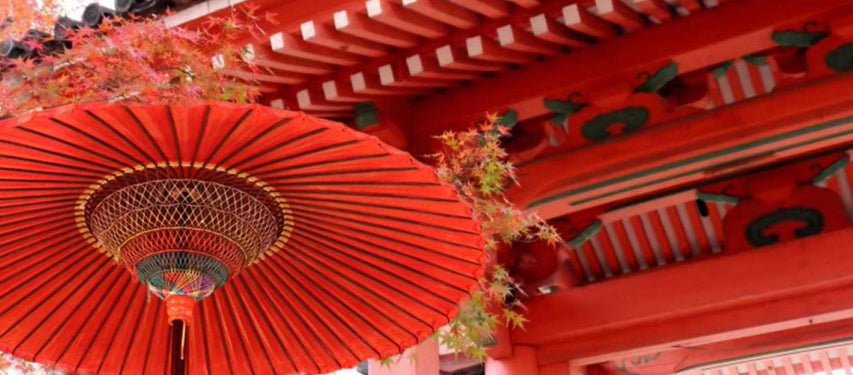About Nodate
Nodate means to enjoy tea ceremony outdoors.
It is a popular tea ceremony because it allows people to enjoy tea while enjoying the beauty of nature, rather than the rigid formalities of a tea ceremony held in a tearoom, and they are frequently held in Japanese gardens and scenic parks.
Nodate is said to have originated when Sen no Rikyu, who accompanied Toyotomi Hideyoshi during his campaign to pacify the Kyushu region more than 500 years ago, served tea in the open air.
Around the same time, the tea master Hechikan delighted Hideyoshi by setting up a vermillion Nodate umbrella to enhance the ambiance of the tea gathering. Since then, Nodate umbrellas have become an indispensable part of Nodate events.
When the Warring States Period ended and the Edo Period began, Nodate became even more popular and the demand for essential items like red scarlet carpet and Nodate umbrellas increased.
Today, Nodate umbrellas are widely used as decorations in teahouses at tourist spots, and continue to be used at Nodate tea ceremonies held at the imperial court.
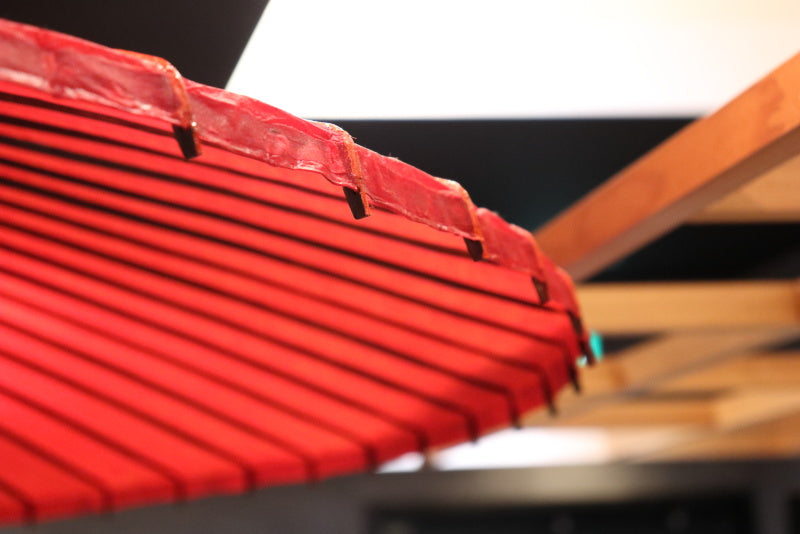
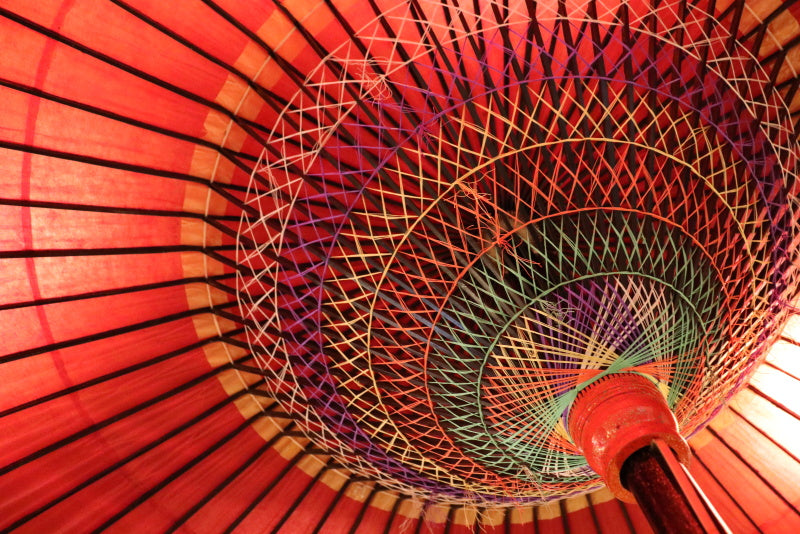
Types of Nodate umbrella
There are two main types of Nodate umbrellas.
■Tsumaore Nodate umbrella
This is an enlarged version of the umbrella originally used for nobles and high priests, and is characterized by a folded claw (the open end of the umbrella is curved inward) to prevent harming others.
The inside is covered with five-colored threads symbolizing protection against evil spirits.
The threads strengthen the connection between the bones and support the umbrella as a whole, preventing injury to people in case the bones are damaged.
At the Kitano Grand Tea Ceremony, Hechikan delighted Hideyoshi with a Tsumaore Nodate umbrella.
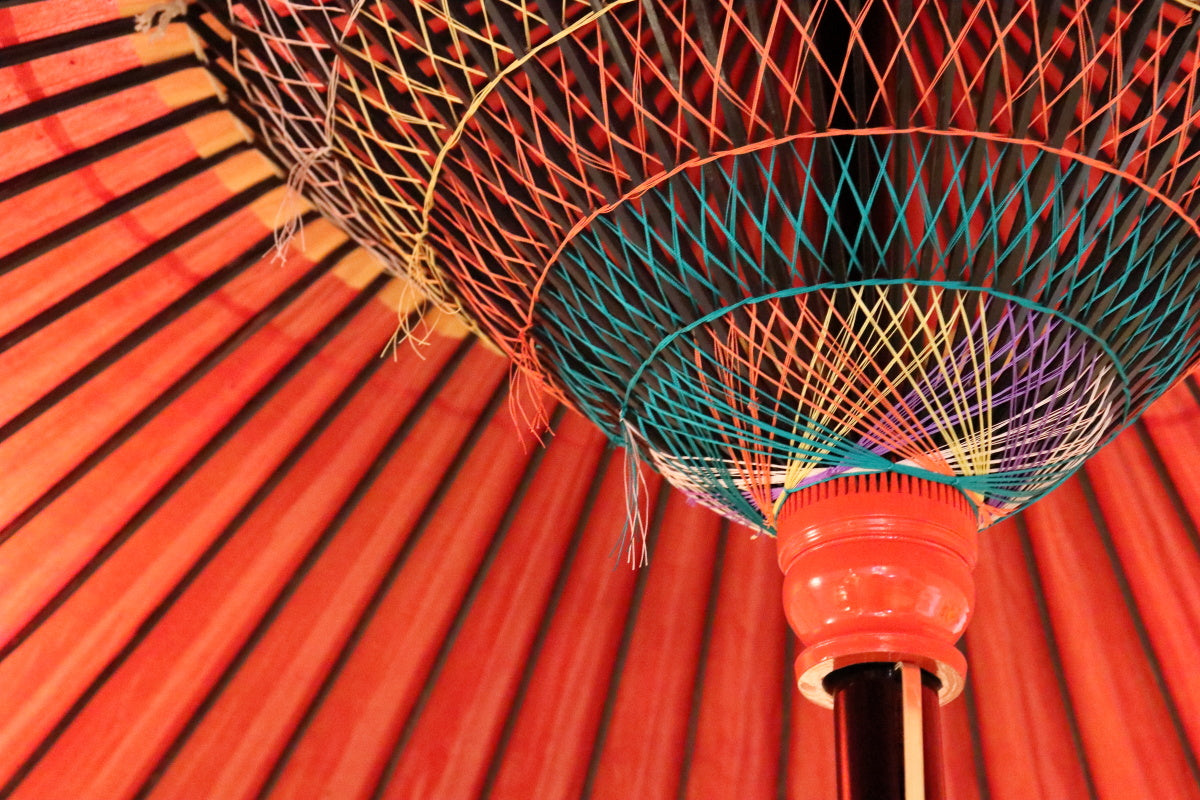
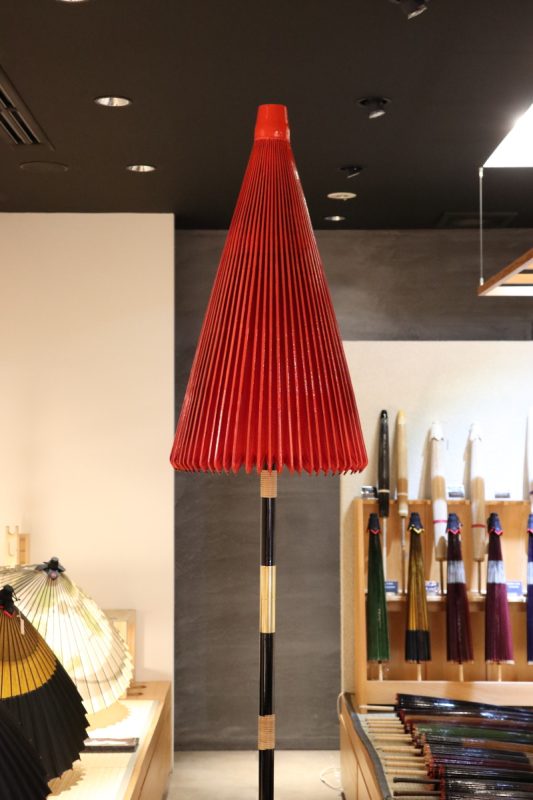
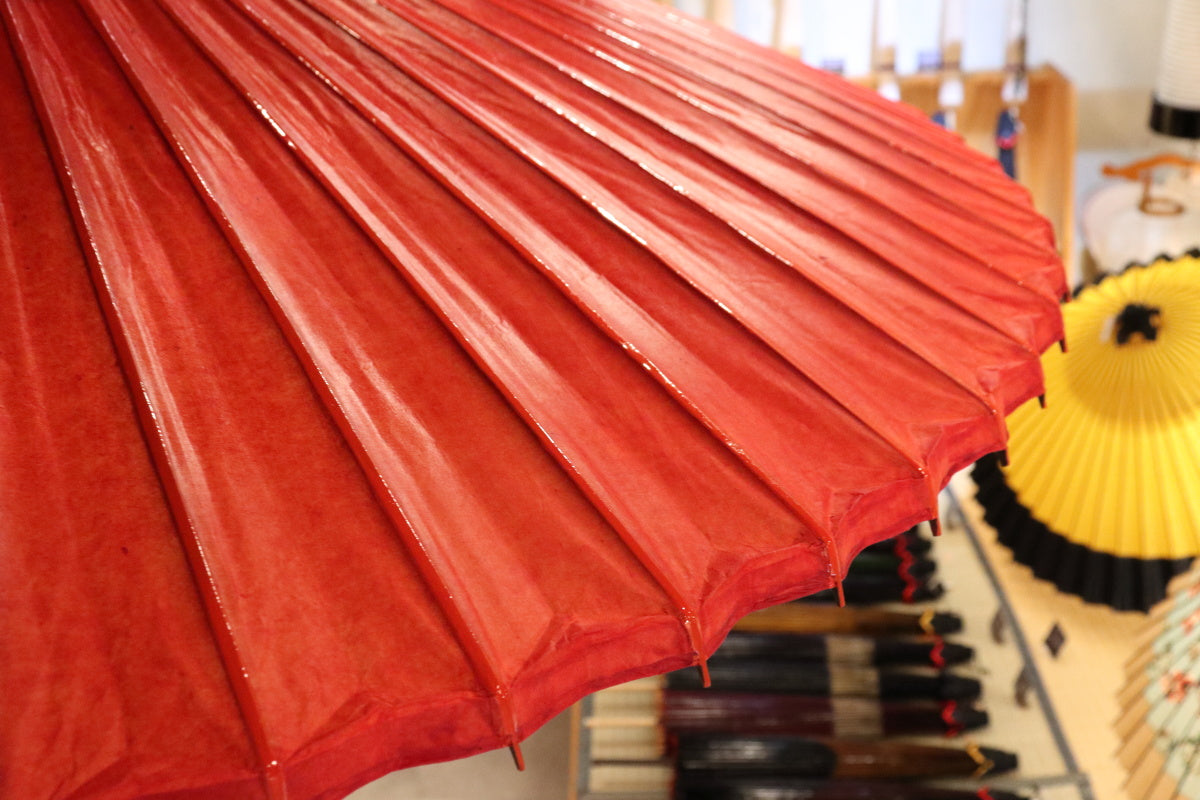
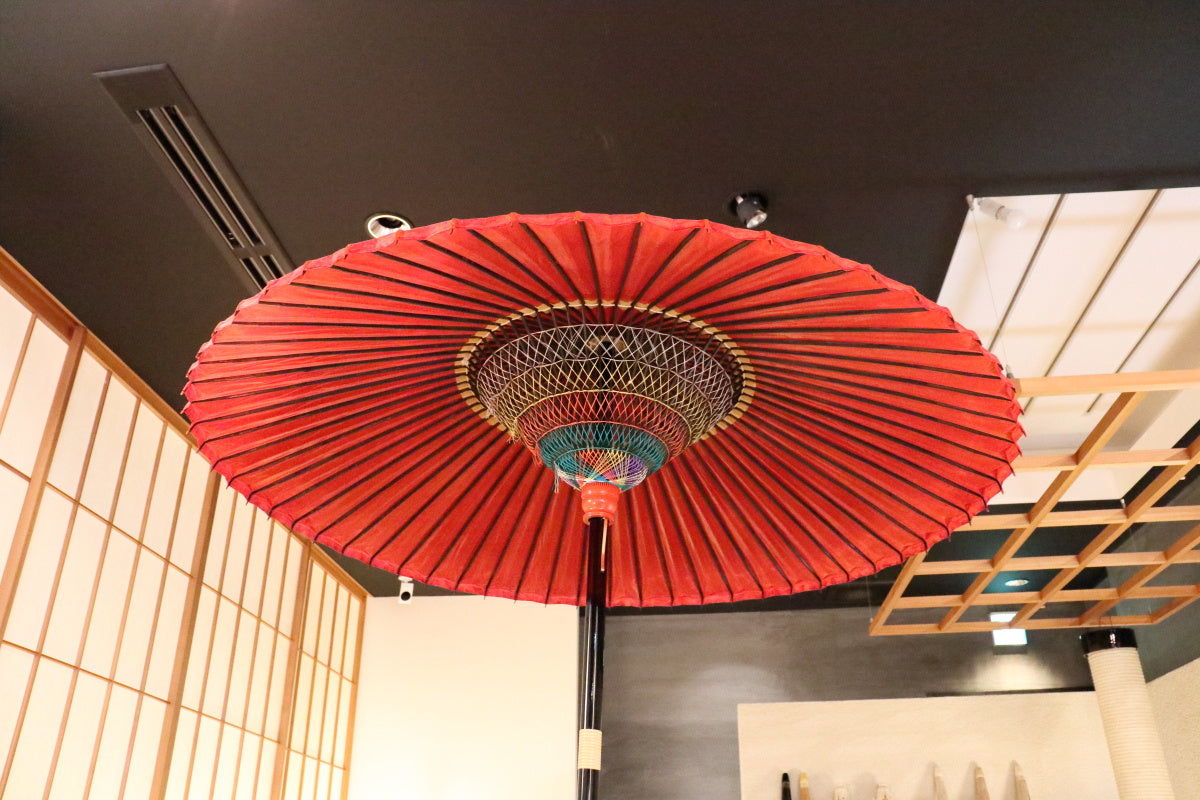
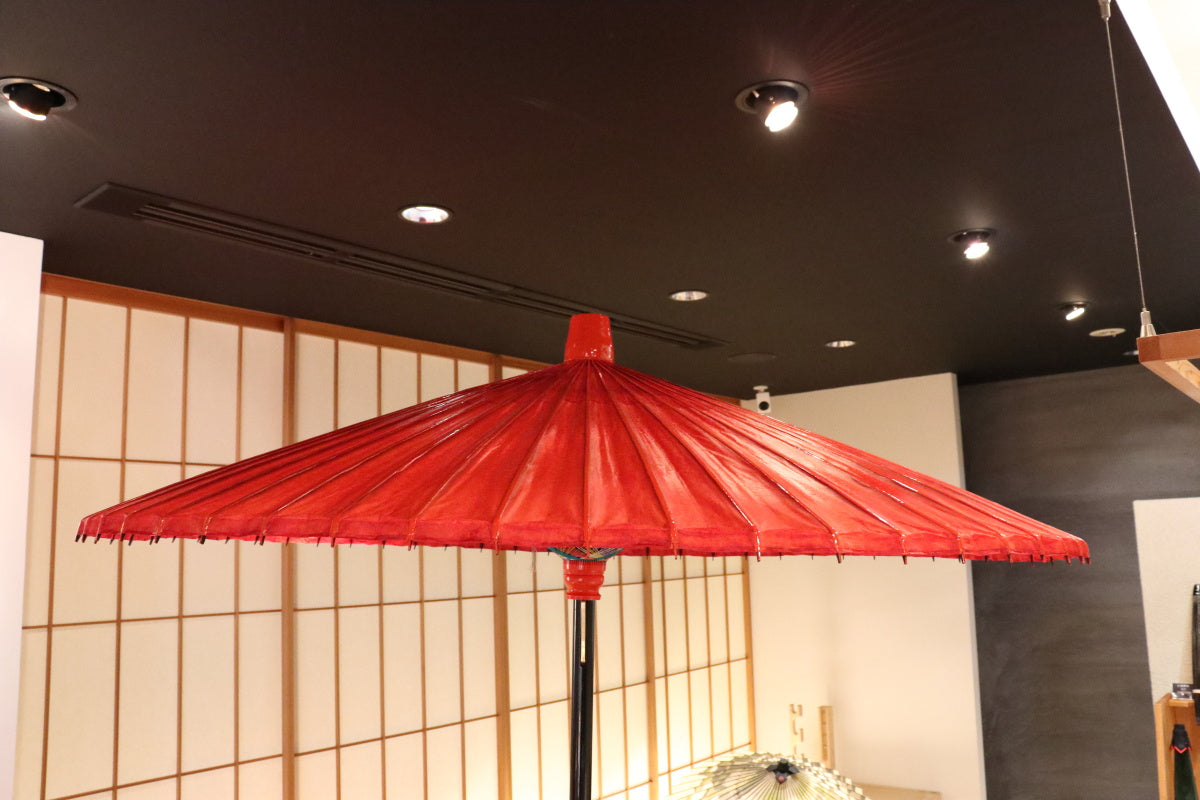
■Japanese Nodate umbrella celebrating Chinese New Year in Vietnam
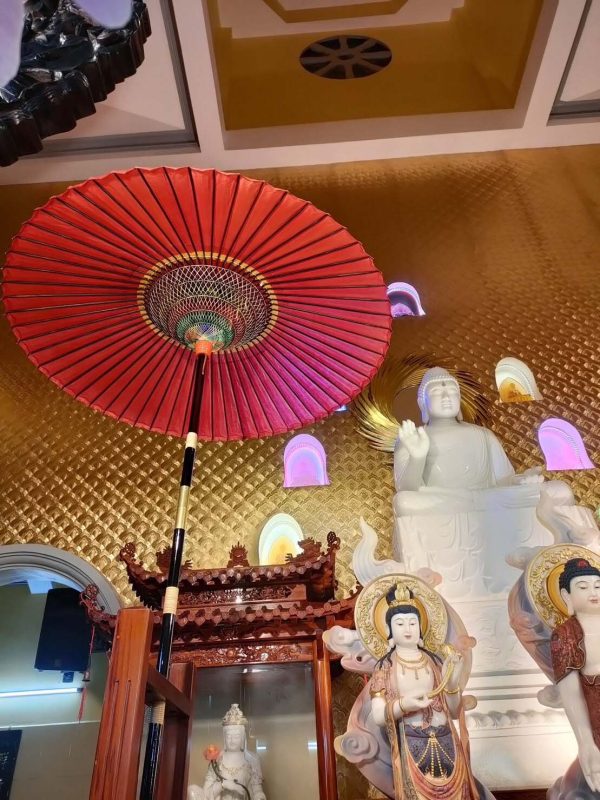
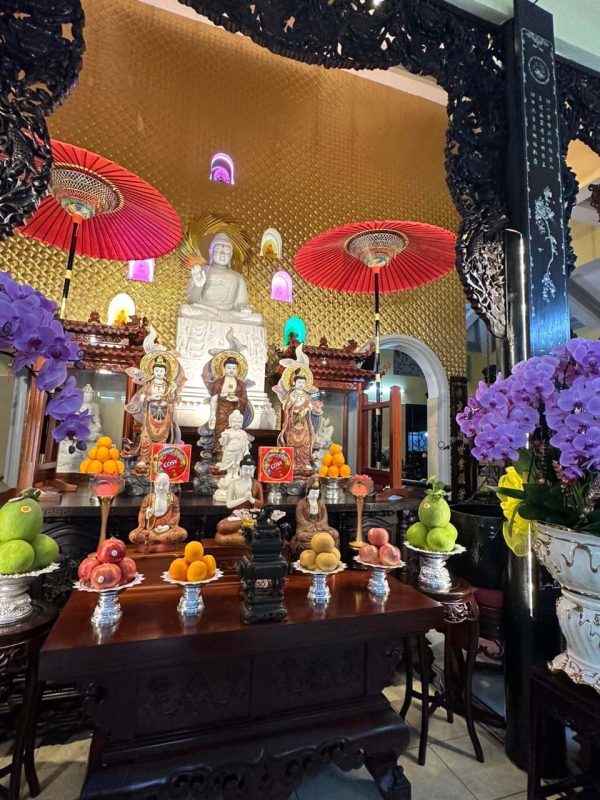
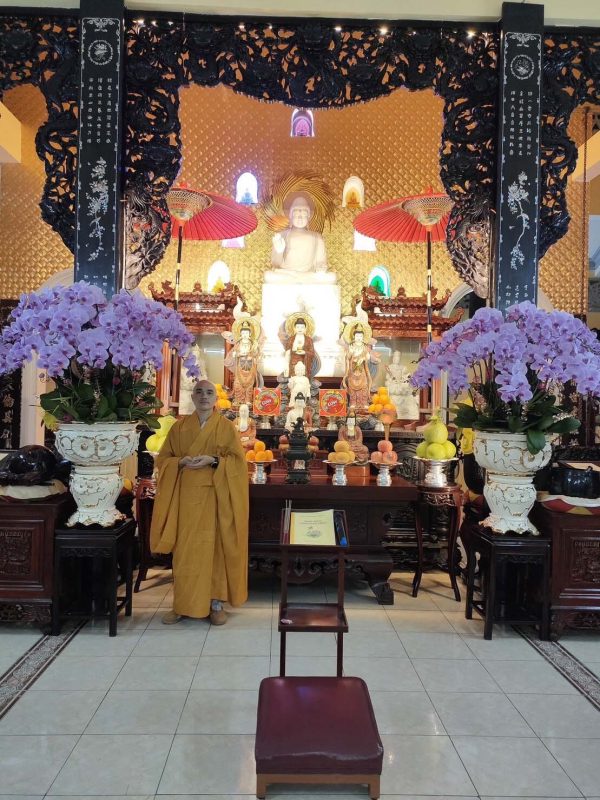
■Formal outdoor tea ceremony umbrella
The authentic Nodate umbrella was invented in 1952 at the same time as the Misonodana shelf by the Grand Master of the Urasenke, Tantansai, who hosted a tea ceremony to celebrate the coming of age of the Crown Prince of Japan.
It closely resembles an enlarged version of a regular daily-use Bangasa and the tips of the umbrella bones extend straight when opened, and there are no decorative threads or adornments.
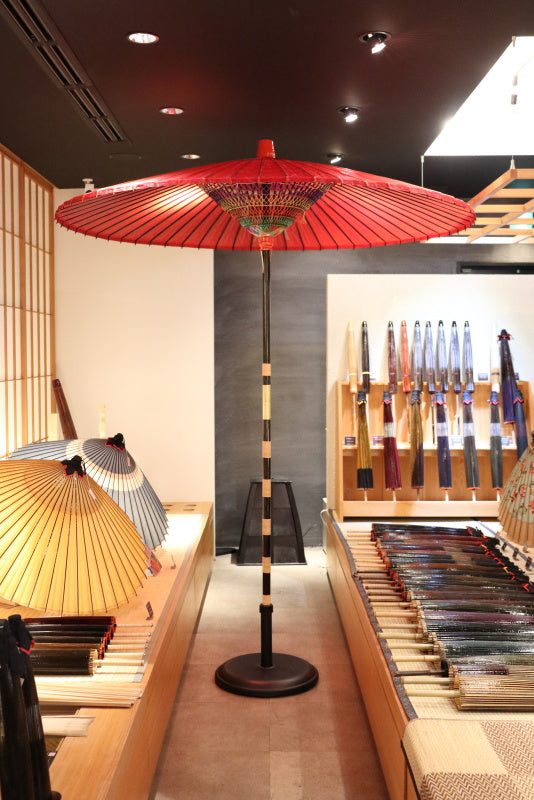
■ About Tsujikura’s Nodate umbrella
・Washi, the raw material
Kurotani Washi, a very strong and durable paper designated as an intangible cultural asset by Kyoto Prefecture, is used.
・Color
The color of the umbrella is vermilion, which has been considered since ancient times to represent the vibrancy of life and to prevent misfortune.
・Tsumaore style
The umbrella features the Tsumaore style, where the tips of the umbrella bones are curved inward when opened.
・Thread
The inside is covered with five-colored threads symbolizing protection against evil spirits.
・Durability
It is made in Japan and can be used for as long as 10 to 20 years, depending on the location.
※Kurotani Washi:This paper is made in Kurotani-cho and Yashiro-cho, Ayabe City, Kyoto Prefecture, and surrounding areas.
It is meticulously crafted by skilled artisans using high quality Kozo (paper mulberry) as the raw material and known for its strength and longevity.
The umbrella is custom-made upon ordering, requiring approximately 1 to 3 months for delivery.
We make the product with great care to satisfy our customers, although it may take a while for delivery.
Color specification is available as a special order, including black, yellow, navy blue, and others. Please feel free to contact us.
【Product Details】
Specifications: Japanese parasol/decoration
※Washi is oiled to increase its strength, but this process is not intended for use in the rain.
Material: Handmade Kurotani Washi, Dyed Vermilion
Color: Vermilion(Red)
Bone: Bamboo
Stretchers: 60
Shaft: Lacquered wood
Latch: Metal
Interior Decorative Threads: 5 and 6 tiered decorations
Length: 218cm (Inner part and handle section: 108cm)
Diameter:Nishaku Gosun 145cm/Sansyaku 177cm
Weight: Nishaku Gosun 2800g/Sansyaku 3,300g
※The umbrella stand in the image is sold separately.
